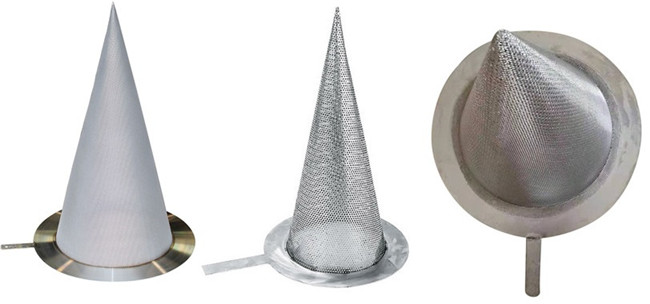Conical strainer processing involves the manufacturing and fabrication techniques used to create conical-shaped strainers. Conical strainers are devices used for filtering or straining liquids or gases, typically in industrial applications. The processing of conical strainers includes several steps, such as material selection, forming, welding, and finishing.
Material Selection: The first step in conical strainer processing is selecting the appropriate material for the strainer based on the application requirements. Common materials used for conical strainers include stainless steel, carbon steel, or other corrosion-resistant alloys, depending on the compatibility with the fluid or gas being filtered.
Forming: The forming process involves shaping the selected material into a conical shape. This can be achieved through various methods, including sheet metal forming techniques such as rolling or pressing. The selected material is typically cut into a flat sheet, and then it is manipulated and formed into a cone shape using specialized tools and equipment.
Welding: Once the conical shape is formed, the edges of the material are joined together through welding. Welding ensures that the strainer is structurally sound and prevents fluid or gas from bypassing the straining element. The welding process can be performed using techniques such as TIG (Tungsten Inert Gas) welding or MIG (Metal Inert Gas) welding, depending on the material and desired strength.
Straining Element Installation: Conical strainers contain a straining element, such as a fine mesh screen or perforated plate, which captures unwanted particles or debris from the fluid or gas. The straining element is installed within the conical structure, either through welding, fastening, or a combination of methods, ensuring it is securely attached.
Finishing: After the straining element is installed, the conical strainer may undergo additional finishing processes. This can include surface treatments such as cleaning, deburring, or polishing to remove any sharp edges or surface imperfections. Additionally, the strainer may be coated or painted to provide further corrosion resistance or to meet specific industry requirements.
Conical strainers find applications in various industries, including oil and gas, chemical processing, food and beverage, pharmaceuticals, and water treatment. They are commonly used to protect downstream equipment from contaminants, remove solids or foreign particles from liquids or gases, and ensure the smooth operation of industrial processes.
It’s important to note that specific processing techniques and steps may vary depending on the manufacturer, the material being used, and the desired specifications for the final conical strainer product.
